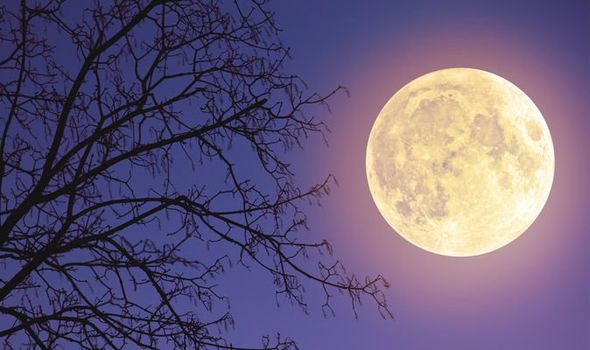


October 31 – 9:49 am / 09:49 Full Hunter’s Moon.October 1 – 5:05 pm / 17:05 Full Harvest Moon.September 2 – 1:22 am / 01:22 Full Corn Moon.August 3 – 11:59 am / 11:59 Full Sturgeon Moon.
 June 5 – 3:12 pm / 15:12 Full Strawberry Moon. May 7 – 6:45 am / 06:45 Flower Supermoon. April 7 – 10:35 pm / 22:35 Super Pink Moon. March 9 – 1:48 pm / 13:48 Super Worm Moon. February 9 – 2:33 am / 02:33 Full Snow Moon. January 10 – 2:21 pm / 14:21 Wolf Moon Lunar Eclipse. Here is the list of when they will occur: In 2020 we will have 13 Full Moons, and some of them are Supermoons. Not only physically but most important spiritually by changing the attitude towards life. Being the first month of Spring, it is the best moment for cleaning. The Worm Moon inspires tremendous energy in us. As the early spring flowers, we have to bloom as well. They believed it’s a perfect time for healing magic. The Pagans considered sap as the blood of the Earth. It is the time when the maple sap starts flowing again. Earth is starting to regenerate, so it’s time for us to do the same. It is a time of kindness, renewal, and rebirth, as nature comes back to life after the stormy and cold winter. Worms in the soil mean that you will have a healthy and rich garden. One of the most important things is that they fertilize the soil breaking down minerals so plants can access them. Our ancestors named it this way because it is the period when the soul starts to soften and wake up after the winter. But it’s not the case with this Worm Moon. The Moon and Sun being aligned can create disturbing energies. People associated the Full Moon with tension, stress, or even death from the beginning of time. Unlike the February’s Supermoon, on which astrologers have big questions if to call it a supermoon or not, the Worm Moon is undebatable a Supermoon.Ī Supermoon usually comes with bigger ocean tides and can create stronger weather events. Unless you see them side by side, the difference would be difficult to notice. We will bearly see the difference in size because it will seem only 7% larger than a regular full moon. Perigee is when the Moon is at its closest point to Earth. It’s called a supermoon because the Full Moon will coincide with the perigee. The next ones will be on April 7 and May 7. The March Super Full Moon is the first of three supermoons in 2020. And finally, the Waning gibbous phase, when the Moon will decrease its visibility again. The visibility will be 100% only on the 28th and 29th. The March’s Full Moon will last three nights until the 29th. The Waxing gibbous phase will be next, from 23rd until 26th, with visibility increasing to 93%. The First Quarter will appear on the 20th, and it can be seen until March 22. The next phase will be the Waxing crescent and will last for five nights. The New Moon phase will start the next night, until the 14th, with less than 2% visibility. From the 7th until March 11, we will experience the Waning crescent phase, the visibility descending from 35% to just 4% on the last night. On March 5, Friday, the Moon will enter its Last Quarter, only for two nights, with maximum visibility of 54%. The first day of the month will be on a Monday, and The Moon will be at the Waning gibbous phase, with 94% visibility. Other names are Crust Moon, Sap Moon, Sugar Moon, and Chaste Moon. Most of the names were given by Native Americans and are in close connection with nature. The name is referring to the entire lunar month, not just the Full Moon.
June 5 – 3:12 pm / 15:12 Full Strawberry Moon. May 7 – 6:45 am / 06:45 Flower Supermoon. April 7 – 10:35 pm / 22:35 Super Pink Moon. March 9 – 1:48 pm / 13:48 Super Worm Moon. February 9 – 2:33 am / 02:33 Full Snow Moon. January 10 – 2:21 pm / 14:21 Wolf Moon Lunar Eclipse. Here is the list of when they will occur: In 2020 we will have 13 Full Moons, and some of them are Supermoons. Not only physically but most important spiritually by changing the attitude towards life. Being the first month of Spring, it is the best moment for cleaning. The Worm Moon inspires tremendous energy in us. As the early spring flowers, we have to bloom as well. They believed it’s a perfect time for healing magic. The Pagans considered sap as the blood of the Earth. It is the time when the maple sap starts flowing again. Earth is starting to regenerate, so it’s time for us to do the same. It is a time of kindness, renewal, and rebirth, as nature comes back to life after the stormy and cold winter. Worms in the soil mean that you will have a healthy and rich garden. One of the most important things is that they fertilize the soil breaking down minerals so plants can access them. Our ancestors named it this way because it is the period when the soul starts to soften and wake up after the winter. But it’s not the case with this Worm Moon. The Moon and Sun being aligned can create disturbing energies. People associated the Full Moon with tension, stress, or even death from the beginning of time. Unlike the February’s Supermoon, on which astrologers have big questions if to call it a supermoon or not, the Worm Moon is undebatable a Supermoon.Ī Supermoon usually comes with bigger ocean tides and can create stronger weather events. Unless you see them side by side, the difference would be difficult to notice. We will bearly see the difference in size because it will seem only 7% larger than a regular full moon. Perigee is when the Moon is at its closest point to Earth. It’s called a supermoon because the Full Moon will coincide with the perigee. The next ones will be on April 7 and May 7. The March Super Full Moon is the first of three supermoons in 2020. And finally, the Waning gibbous phase, when the Moon will decrease its visibility again. The visibility will be 100% only on the 28th and 29th. The March’s Full Moon will last three nights until the 29th. The Waxing gibbous phase will be next, from 23rd until 26th, with visibility increasing to 93%. The First Quarter will appear on the 20th, and it can be seen until March 22. The next phase will be the Waxing crescent and will last for five nights. The New Moon phase will start the next night, until the 14th, with less than 2% visibility. From the 7th until March 11, we will experience the Waning crescent phase, the visibility descending from 35% to just 4% on the last night. On March 5, Friday, the Moon will enter its Last Quarter, only for two nights, with maximum visibility of 54%. The first day of the month will be on a Monday, and The Moon will be at the Waning gibbous phase, with 94% visibility. Other names are Crust Moon, Sap Moon, Sugar Moon, and Chaste Moon. Most of the names were given by Native Americans and are in close connection with nature. The name is referring to the entire lunar month, not just the Full Moon. 
Historically, our ancients used Full Moon names to track the seasons. The reason for that is the emerging from the ground of earthworms and grubs, announcing the end of winter and the beginning of Spring. The Full Moon in March is generally known as The Worm Moon. Let’s see what traditions, legends, and other Moon names are associated with the March Full Moon. It is also the first Super Moon of the year 2020. The Full Moon in March, known as the Worm Moon in many traditions, amazing civilizations from the beginning of time with its beauty, light, and size.








 0 kommentar(er)
0 kommentar(er)
